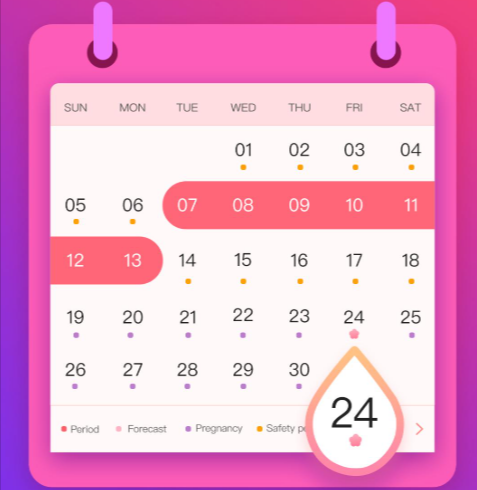Duloxetine
What is duloxetine?
Duloxetine is a selective serotonin and norepinephrine reuptake inhibitor antidepressant (SSNRI). Duloxetine affects chemicals in the brain that may be unbalanced in people with depression.
Duloxetine is used to treat major depressive disorder in adults. It is also used to treat general anxiety disorder in adults and children who are at least 7 years old.
Duloxetine is also used in adults to treat nerve pain caused by diabetes (diabetic neuropathy), or chronic muscle or joint pain (such as low back pain and osteoarthritis pain).
Some brands of duloxetine are also used to treat fibromyalgia (a chronic pain disorder). Drizalma is for treating fibromyalgia only in adults. Cymbalta may be used to treat fibromyalgia in adults and children at least 13 years old.
Duloxetine side effects
Get emergency medical help if you have signs of an allergic reaction to duloxetine (hives, difficult breathing, swelling in your face or throat) or a severe skin reaction (fever, sore throat, burning eyes, skin pain, red or purple skin rash with blistering and peeling).
Tell your doctor right away if you have new or sudden changes in mood or behavior, including new or worse depression or anxiety, panic attacks, trouble sleeping, or if you feel impulsive, irritable, agitated, hostile, aggressive, restless, more active or talkative, or have thoughts about suicide or hurting yourself.
Call your doctor at once if you have:
pounding heartbeats or fluttering in your chest;
a light-headed feeling, like you might pass out;
easy bruising, unusual bleeding;
vision changes;
painful or difficult urination;
liver problems – right-sided upper stomach pain, itching, dark urine, jaundice (yellowing of the skin or eyes);
low blood sodium – headache, confusion, problems with thinking or memory, weakness, feeling unsteady; or
manic episodes – racing thoughts, increased energy, decreased need for sleep, risk-taking behavior, being agitated or talkative.
Seek medical attention right away if you have symptoms of serotonin syndrome, such as: agitation, hallucinations, fever, sweating, shivering, fast heart rate, muscle stiffness, twitching, loss of coordination, nausea, vomiting, or diarrhea.
Common duloxetine side effects may include:
drowsiness;
nausea, constipation, loss of appetite;
dry mouth; or
increased sweating.
Warnings
You should not take morphine if you have severe asthma or breathing problems, a blockage in your stomach or intestines, or a bowel obstruction called paralytic ileus.
Morphine can slow or stop your breathing and may be habit-forming. MISUSE OF OPIOID MEDICINE CAN CAUSE ADDICTION, OVERDOSE, OR DEATH, especially in a child or other person using the medicine without a prescription. Keep the medication in a place where others cannot get to it.
Taking opioid medicine during pregnancy may cause life-threatening withdrawal symptoms in the newborn.
Fatal side effects can occur if you use morphine with alcohol or with other drugs that cause drowsiness or slow your breathing.
Before taking this medicine
You should not use duloxetine if you are allergic to it.
Do not take duloxetine within 5 days before or 14 days after you have used an MAO inhibitor, such as isocarboxazid, linezolid, methylene blue injection, phenelzine, or tranylcypromine. A dangerous drug interaction could occur.
Tell your doctor if you also use stimulant medicine, opioid medicine, herbal products, or medicine for depression, mental illness, Parkinson’s disease, migraine headaches, serious infections, or prevention of nausea and vomiting. An interaction with duloxetine could cause a serious condition called serotonin syndrome.
Duloxetine is not approved for use by anyone younger than 7 years old.
To make sure duloxetine is safe for you, tell your doctor if you have:
heart problems, high blood pressure;
liver or kidney disease;
slow digestion;
a seizure;
bleeding problems;
sexual problems;
narrow-angle glaucoma;
bipolar disorder (manic depression);
drug addiction or suicidal thoughts; or
if you drink large amounts of alcohol.
People with depression or mental illness may have thoughts about suicide. Some young people may have increased suicidal thoughts when first starting a medicine to treat depression. Stay alert to changes in your mood or symptoms. Your family or caregivers should also watch for sudden changes in your behavior.
Taking an SNRI antidepressant during late pregnancy could increase your risk of excessive bleeding after you give birth, and may cause serious medical complications in the baby. However, stopping the medicine may not be safe if you have a relapse of depression. Do not start or stop duloxetine without asking your doctor.
If you are pregnant, your name may be listed on a pregnancy registry to track the effects of duloxetine on the baby.
If you are breastfeeding, tell your doctor if you notice drowsiness, feeding problems, and slow weight gain in the nursing baby.
How should I take duloxetine?
Take duloxetine exactly as prescribed by your doctor. Follow all directions on your prescription label and read all medication guides or instruction sheets. Your doctor may occasionally change your dose.
Taking duloxetine in higher doses or more often than prescribed will not make it more effective, and may increase side effects.
Swallow the capsule whole and do not crush, chew, break, or open it.
You may take duloxetine with or without food.
Your blood pressure will need to be checked often.
Tell your doctor if you have any changes in sexual function, such as loss of interest in sex, trouble having an orgasm, or (in men) problems with erections or ejaculation. Some sexual problems can be treated.
Your symptoms may not improve for up to 4 weeks.
Do not stop using duloxetine suddenly, or you could have unpleasant symptoms (such as agitation, confusion, tingling or electric shock feelings). Ask your doctor before stopping the medicine.
Store at room temperature away from moisture and heat.
Dosing information
Usual Adult Dose for Depression:
Initial dose: 20 mg to 30 mg orally 2 times a day
Maintenance dose: 60 mg per day, given either once a day OR 30 mg orally 2 times a day
Maximum dose: 120 mg/day.
Usual Adult Dose for Fibromyalgia:
Initial dose: 30 mg orally once a day for at least 1 week
Maintenance dose: 30 to 60 mg orally once a day.
Usual Adult Dose for Generalized Anxiety Disorder:
Initial dose: 60 mg orally once a day
Maintenance dose: 60 to 120 mg orally once a day
Maximum dose: 120 mg/day.
Usual Adult Dose for Pain:
Initial dose: 30 to 60 mg orally once a day
Maintenance dose: 60 mg orally once a day.
Usual Adult Dose for Neuropathic Pain:
Initial dose: 30 to 60 mg orally once a day
Maintenance dose: 60 mg orally once a day.
Usual Adult Dose for Chronic Pain:
Initial dose: 30 to 60 mg orally once a day
Maintenance dose: 60 mg orally once a day.
Usual Geriatric Dose for Generalized Anxiety Disorder:
Initial dose: 30 mg orally once a day for at least 2 weeks
Maintenance dose: 60 mg orally once a day
Maximum dose: 120 mg/day.
Usual Pediatric Dose for Generalized Anxiety Disorder:
7 to 17 years:
-Initial dose: 30 mg orally once a day for at least 2 weeks
-Maintenance dose: 30 to 60 mg orally once a day
-Maximum dose: 120 mg/day.
Usual Pediatric Dose for Fibromyalgia:
13 years and older:
-Initial dose: 30 mg orally once a day for at least 1 week
-Maintenance dose: 30 to 60 mg orally once a day.
Interaction
Health Tools
Related/Similar Drugs
Paroxetine
Home What is paroxetine? Paroxetine is an antidepressant that belongs to group of drugs called selective serotonin reuptake inhibitors (SSRIs). Paroxetine affects […]
Escitalopram
Home What is escitalopram? Escitalopram is an antidepressant belonging to a group of drugs called selective serotonin reuptake inhibitors (SSRIs). It affects […]
Duloxetine
Home What is duloxetine? Duloxetine is a selective serotonin and norepinephrine reuptake inhibitor antidepressant (SSNRI). Duloxetine affects chemicals in the brain […]




